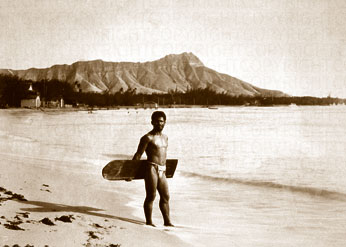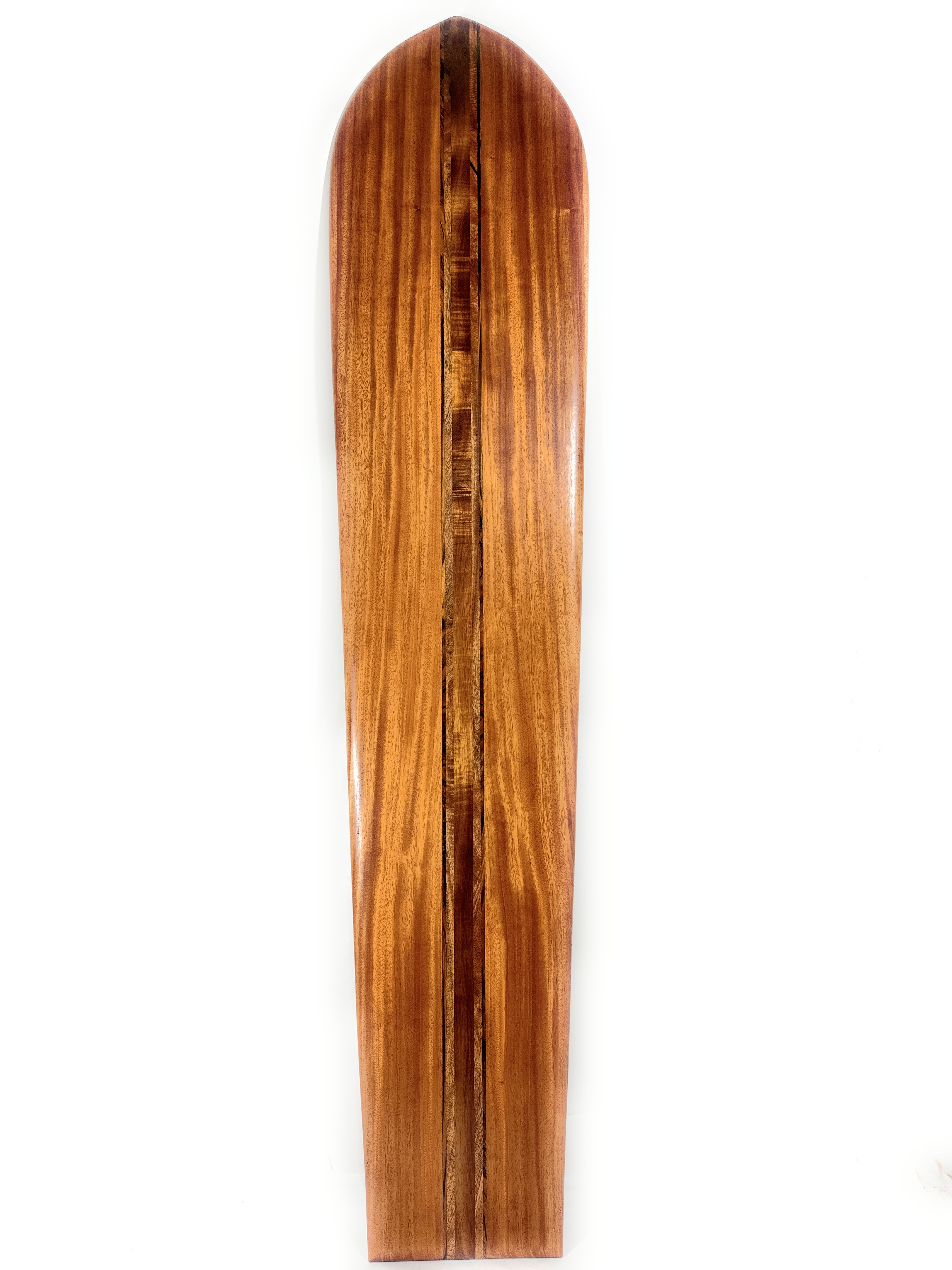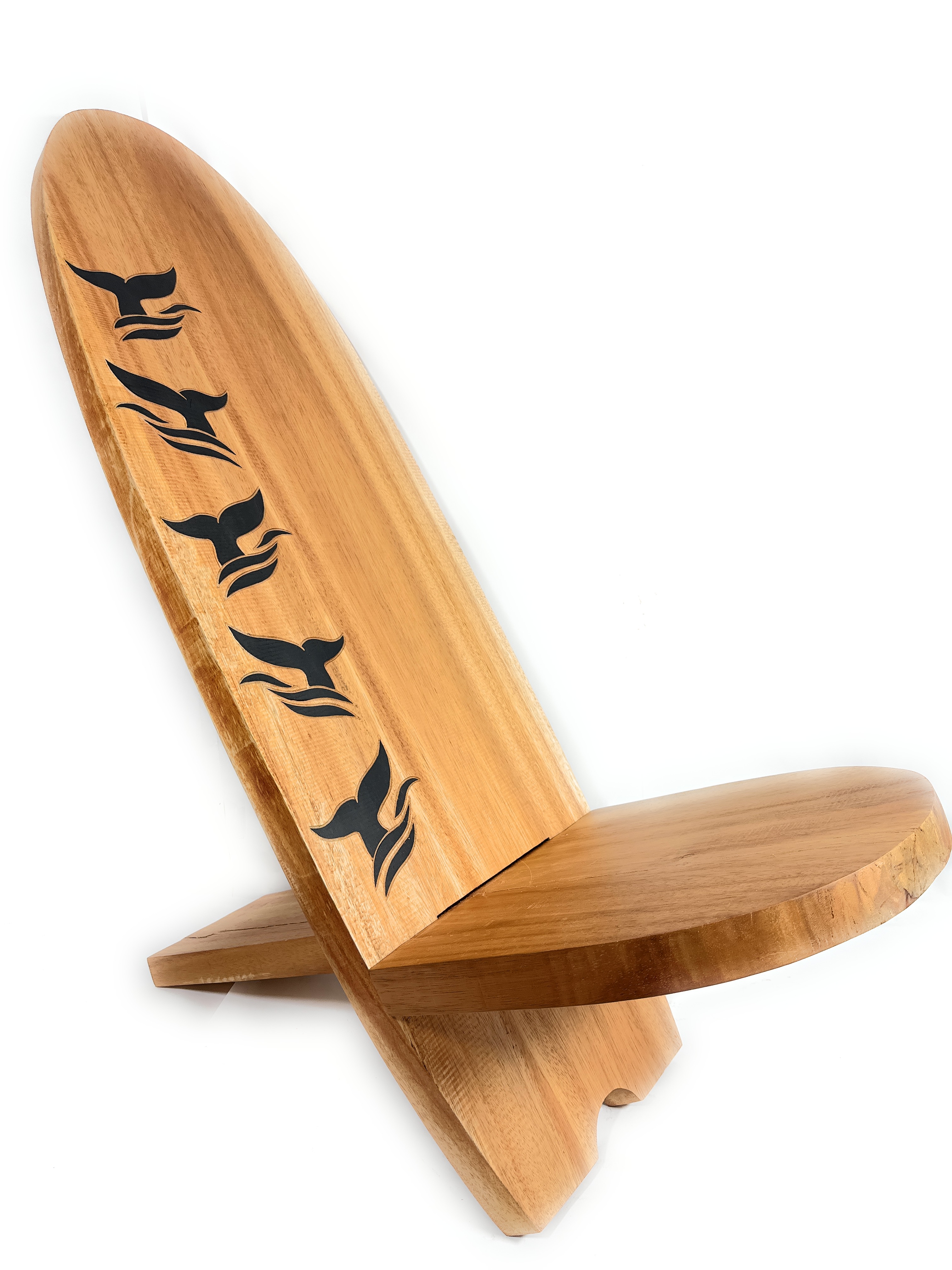This article discusses alaia surfboards, their history, and why Hawaiian people still love and honor them in Hawaii. We will delve into the craftsmanship behind these boards and understand the resurgence of their popularity in modern times.
The Art of Surfboard Making
Before the introduction of modern materials, ancient Hawaiians used wooden surfboards for centuries. Skilled artisans typically made these boards from koa or wiliwili wood by hand.
Selecting the correct type of wood was crucial. It determined the strength of the board and its performance in water. The choice of wood also impacted how well the board floated.
The process of making an alaia surfboard is a true art form. It starts with selecting a piece of wood with the right dimensions and characteristics to make a suitable board.

Craftsmen cut, plane, and shape the wood using traditional tools such as adzes and chisels. Creating a surfboard requires extensive knowledge in carpentry and surfing. The board's design impacts its performance on waves.
This design adheres to the Hawaiian custom of surfing large waves. Locations like Waimea Bay are where surfers tackle these waves.
After shaping the board, sand and polish it to perfection. Next, the craftsman carves detailed designs into the wood to create a unique surfboard that is both practical and attractive.
Adding final details to an alaia board is important for both aesthetics and functionality. It can improve the board's performance in the water. Additionally, it can help form a unique connection with the board.
The Significance of Surfboard Art
In Hawaiian culture, surfboards are more than just a means of transportation on the waves. These items are special and often decorated with detailed patterns and symbols that have cultural and spiritual meaning. We carefully chose the decorations on these items to represent important cultural and spiritual beliefs.
People in the culture they belong to see these symbols and patterns as meaningful and hold a special place for them. The intricate designs on these items convey deep cultural and spiritual meanings. These markings acknowledge the island's rich heritage and people believe they bring good fortune to surfers.
These designs can represent family lineage, spiritual beliefs, or even depict stories and legends from the Hawaiian Kingdom. Hawaiians see a surfboard as more than just equipment.
It showcases their connection to the ocean and their culture, which visitors can see at the Bishop Museum. It is a symbol of their heritage and love for the sea.
Hawaiian craftsmen pass down a tradition of making boards through generations. The skill and creativity of these craftsmen are evident in their work. The tradition showcases the craftsmanship of Hawaiian artisans.
The History of the Alaia Surfboard
People likely made the first surfboards on the island of hawaiʻi from natural materials such as reeds or bamboo. However, it was the introduction of the alaia that revolutionized surfing in the islands. These boards made surfing easier and more controlled, turning it from a hobby into a respected sport.

Hawaiian royalty traditionally used the alaia for surfing, a sport reserved for the elite. These boards were typically longer, narrower, and thinner than modern surfboards, making them more challenging to ride. Their stylish appearance showed how important surfing was in Hawaiian society and how prestigious the users were.
In the early 1900s, Hawaiian surfers like Duke Kahanamoku started trying out new materials for their boards. They moved away from the heavy wooden alaia to lighter balsa wood, and later on, foam and fiberglass boards. This innovation sparked a transformation in surfing, leading to the modern sport as we know it today.
The Revival of the Alaia
In the 2000s, people became more interested in traditional Hawaiian surf culture and started using alaia surfboards again. Surfers and board makers began trying out new designs and materials for alaia boards, mixing old and new techniques. This movement was not only about nostalgia but also about sustainability and a return to surfing's roots.

Today, many surfboard makers in Hawaii create custom alaia boards, each with their own special style. Many surfers worldwide enjoy riding traditional wooden boards, which have become popular among the surfing community. The tactile sensation of the wood and the way it moves through the water offers a distinct and revered surfing experience.
Hawaiian Island Creations Surfboards
One company that has become synonymous with Hawaiian surf culture is Hawaiian Island Creations (HIC). Brothers Stephen and Jimmy Tsukayama founded HIC in 1971. It is a popular brand in the surf industry.
Customers know HIC for its high-quality surfboards and clothing. Their commitment to the sport and the culture it embodies is evident in every product they offer.
HIC sells modern surfboards and also honors surfing history with their alaia boards. Skilled shapers make these boards using traditional methods. Detailed designs decorate them, making each one a unique piece of art. The HIC alaia boards connect the past and present, providing a special surfing experience.
The Importance of Preserving Hawaiian Surf Culture
For the people of Hawaii, surfing transcends being merely a sport. It embodies a way of life and serves as a connection to their forebears and the ocean. The conservation of Hawaiian surf tradition holds significant importance.
Utilizing alaia surfboards is one method to achieve this. It aids in preserving the islands' history and sustaining traditions. It provides a means for present generations to uphold a concrete connection to their ancestry and disseminate it globally.
HIC recognizes this importance and is committed to supporting and promoting Hawaiian surf culture through their surfboards and apparel. The company supports the community through their HIC Foundation. The foundation helps organizations and projects that focus on education, the environment, and Hawaiian culture. Their dedication to preserving the island's surfing legacy is a cornerstone of their business philosophy.
Why do people continue to celebrate Alaia Surfboards?
New surfboards are easier and more maneuverable, but many surfers and Hawaiians still love the traditional alaia board. Here are a few reasons why:
A Connection to Tradition and Culture
As mentioned earlier, Hawaiian culture and history deeply intertwine with the alaia surfboard. Riding an alaia is more than just catching waves. It's also about linking with your ancestry and honoring customs. It tells the story of how surfing started and the bravery and skill of the people who did it long ago.
A Unique Surfing Experience
Riding an alaia is a completely different experience from riding a modern surfboard. The longer, thinner shape of the board requires a different approach and more skill to catch and ride waves. This challenge is part of the appeal for many surfers, as it allows them to push themselves and improve their surfing abilities.
The alaia board is highly reactive, providing a deep bond with the wave, resulting in a thrilling journey. Contemporary boards are unable to replicate this experience.
Aesthetic Appeal
From a Hawaiian history perspective there's no denying that the alaia is a beautiful and unique surfboard. The beautiful patterns carved into the wood make it a stunning piece of art.

Enthusiasts of surfing often showcase their alaia boards at home as a decorative piece. This shows their passion for surfing and Hawaiian culture. They enjoy showcasing their love for the sport in this way. Surfers love the alaia for its excellent performance in the water and its beautiful design and craftsmanship.
In Conclusion
The traditional wooden Hawaiian surfboard, or alaia, is more than just a surfboard. Hawaiian surfing is not just a tradition but a way of life across the islands of Hawaii.
It is also a symbol of culture and history. It is considered a work of art. It offers a unique experience.
Surfers and Hawaiians still love the alaia board, despite the popularity of modern surfboards. Hawaiian surf culture will always remember it as an important part. The revival and ongoing love for tradition show how much Hawaiians cherish their connection to the ocean.
Visit Tikimaster.com to see a large selection of alaia wooden surfboards made from koa wood. You can find them at their warehouse in Kailua or on their website.














